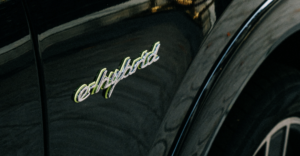
A Complete Guide to Hybrid Car Battery Warranties
Hybrid technology has come a long way in the last ten years with innovations in range, fuel economy, and charging. Hybrid batteries have become more
Call Now
(800) 268-5080
Call Now
(800) 268-5080
Call Now
(800) 268-5080
Call Now
(800) 268-5080
Call Now
(800) 268-5080
Call Now
(800) 268-5080
Call Now
(800) 268-5080
Call Now
(800) 268-5080
Call Now
(800) 268-5080
Consumers can buy an extended auto warranty at any time, even after their original manufacturer’s warranty has expired. Not all warranties cover the vehicle bumper-to-bumper, so it’s important to understand what is and is not covered with your extended auto warranty.
Car warranty plans are typically offered in three types. The most common is the powertrain warranty. The powertrain is comprised of the the components responsible for creating power within the car: the engine, drive shafts, and transmission. If any of these parts fail, the repair cost is covered by the warranty. However, the typical vehicle is made up of thousands of parts so the few covered by the powertrain warranty make it comparably limited.
This warranty, also known as the named parts warranty, provides coverage for parts listed in the contract terms. If a part not listed in the contract malfunctions, the vehicle owner must pay for repairs. Be sure to read the fine print of the contract to determine which parts are actually covered.
This is the most comprehensive auto warranty plan. Also known as a bumper-to-bumper warranty, this plan provides coverage for an array of parts and systems. It covers so many vehicle parts, it is easier to state which parts are excluded. This is why it is called the exclusionary warranty. This coverage applies to the major systems of the vehicle including the electrical components, engine, air conditioner, brakes, transmission, fuel system, transfer unit, front and rear suspension, and more.
This coverage accounts for factory brakes, air conditioner, electrical components, engine cooling system, fuel system, front and rear suspension, convertible motor, mirror electronics, door locks and more.
This coverage includes the transmission and engine and drive axle assembly. All of those internally lubricated parts positioned within the differential housing, final drive housing and trans-axle housing are also covered.
This coverage includes business/commercial use, high tech electronic components, navigation system, key loss/damage, components for hybrids/electric/natural gas and even windshield repair.
A number of extra benefits are available under the majority of extended car warranties yet they are paid for separately. Examples of such additional benefits include rental car coverage, roadside assistance, fuel delivery, lockout assistance, substitute transportation, and towing.
There are plenty of considerations to ponder when selecting an extended car warranty. Auto warranty providers offer premiums and deductibles according to the vehicle make and model, mileage, and age. So be sure to provide accurate data about your vehicle. Otherwise, the warranty could be voided. In general, extended policies are provided for automobiles outside of the original manufacturer warranty as long as they have been driven fewer than 100,000 miles. A vehicle with miles beyond this level will ultimately prove somewhat costly to cover through a warranty.
The length of the contract depends on the maximum number of miles and years. Once either of these maximums is reached, the warranty is voided. The vehicle must meet the eligibility requirements in order for coverage to be renewed. If the policy is canceled by the provider during the policy review period, typically 30 days, a refund will likely be issued within the first month.
The top complaint of those who have an extended car warranty is claim denials. These complaints could have been avoided if the vehicle owners read the policy. Use the policy review period to ensure you are getting exactly what you need in terms of coverage. If changes are necessary, make sure to request them during this review period.
The majority of extended car warranty companies are willing to transfer these coverage plans without any issues. The warranty follows the vehicle rather than the driver. Be sure to check out the minimal transfer requirements before moving forward.
If a repair is necessary, the extended car warranty provider might require a certain auto expert to do the work. However, if the repair facility you have in mind is licensed or ASE certified, the warranty provider should not have an issue with the work being done there. Always check with the extended car warranty company prior to bringing the vehicle to a specific shop. Bring it to an approved facility, present the warranty agreement or a membership card, and the wheels will be in motion to have your vehicle repaired. The issue will be diagnosed and the mechanic will contact the claims administrator to obtain authorization for repair. Don’t forget to get a rental vehicle, most extended policies come with rental benefits.
Vehicle warranties typically have deductibles. This is the amount the vehicle owner pays prior to coverage kicking in. Be sure to find out if the deductible of a prospective warranty is on a per-repair or per-visit basis. A per-repair deductible results in a separate fee for each part serviced, which is less common. There is a fixed cost with the per-visit deductible, you only pay once per visit no matter how many parts had to be repaired. Keep in mind you will be on the hook for the full cost of repairs until the waiting period passes. This period is typically about a month in length or upwards of 1,000 miles driven. Some policies have a 60-day waiting period, make sure to check with your warranty company.
Extended car warranties differ according to the nuances of each individual plan as well as the nuances of the provider. Some extended car warranties are limited to costs associated with break downs. Others provide extensive coverage. Typical items not covered range from brakes to tires, and light bulbs. The cost of this type of warranty depends on an array of variables like the vehicle make and model, its mileage, year, and even the manner in which the owner drives.
Certain companies underwrite their own policies. Others have the backing of an insurance company. If the provider is backed by an insurer, it makes sense to do some digging on the insurer to boot. The moral of the story is to make sure all of your bases are covered before moving forward with any type of auto warranty.

Hybrid technology has come a long way in the last ten years with innovations in range, fuel economy, and charging. Hybrid batteries have become more

The main benefit of buying a new car is the associated full warranty coverage from the vehicle manufacturer. This means that servicing, repairs, and replacement

There are several factors to consider when you are looking to buy a car. One is whether or not the car has a warranty. And

Most manufacturer or dealership warranties expire before your vehicle’s odometer clocks 100,000 miles. Unfortunately, cars become increasingly vulnerable to costly repairs with advancing age. Therefore,

When you purchase any new vehicle, the manufacturer attaches a warranty that covers any repairs that may need to be made within a certain period

All auto manufacturers will give you a warranty when you purchase a new car. This type of warranty is known as factory warranty and covers

2024 © All Rights Reserved - Consumer Review Center